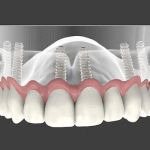- 1-Understanding Gum Disease After Tooth Extraction
- 2-Common Causes of Gum Disease Post Extraction
- 3-Signs and Symptoms to Watch For
- 4-How Poor Oral Hygiene Contributes to Infection
- 5-Role of Smoking and Other Risk Factors
- 6-Preventive Measures and Best Practices
1. Understanding Gum Disease After Tooth Extraction
Tooth extraction is a common dental procedure, but it does create an open wound in the gums that requires proper healing. Sometimes, bacteria can invade this site, leading to gum disease or infection after the extraction. Understanding the causes of gum disease after tooth extraction helps patients recognize risks and take early action to maintain oral health.
The extraction site is vulnerable as the surrounding tissue and bone adjust to the loss of the tooth. If bacteria proliferate unchecked, it can cause inflammation, swelling, and discomfort. In severe cases, untreated gum disease can delay healing or lead to more serious complications such as abscesses.
2. Common Causes of Gum Disease Post Extraction
The primary cause of gum disease after tooth extraction is bacterial infection. This can arise from food particles trapped in the extraction site, inadequate cleaning, or pre-existing periodontal conditions. Other causes include trauma from the extraction procedure itself and poor blood supply to the healing tissue.
Sometimes, dry socket—a condition where the blood clot protecting the extraction site is dislodged—can expose bone and soft tissue to infection. Additionally, systemic health conditions like diabetes can impair healing and increase the risk of gum infection.
3. Signs and Symptoms to Watch For
Common symptoms indicating gum disease after tooth extraction include persistent pain beyond the usual healing period, swelling around the extraction site, redness, bleeding, and bad breath. Some patients may experience pus discharge or fever, which require prompt dental attention.
Early recognition of these signs allows timely intervention, preventing progression to more serious infections or chronic gum disease.
4. How Poor Oral Hygiene Contributes to Infection
Poor oral hygiene after tooth extraction significantly increases the risk of gum disease. Failure to gently clean the mouth and extraction site allows plaque and bacteria to accumulate, fostering an environment for infection. Rinsing with warm salt water and avoiding harsh brushing directly on the wound are essential for keeping the area clean without disrupting healing.
Many cases reported at Dentistry Toothtruth involve patients who neglected post-extraction care instructions, emphasizing the importance of good hygiene habits.
5. Role of Smoking and Other Risk Factors
Smoking is a well-known risk factor that impairs healing and promotes gum disease after tooth extraction. Nicotine restricts blood flow and reduces oxygen supply to tissues, making infections more likely and recovery slower.
Other risk factors include compromised immune systems, certain medications, poor nutrition, and existing periodontal disease. Understanding these helps patients identify personal risk and work closely with dental professionals for preventive care.
6. Preventive Measures and Best Practices
To prevent gum disease after tooth extraction, follow all dental care instructions carefully. This includes avoiding strenuous activities, eating soft foods, maintaining gentle oral hygiene, and attending follow-up appointments.
Using prescribed antibiotics or antiseptic rinses when recommended can reduce bacterial risk. Quitting smoking and managing chronic health conditions also contribute significantly to successful healing.
Patients seeking tailored advice and products for post-extraction care can visit Dentistry Toothtruth, which offers expert guidance and quality dental supplies to support oral health.







 Joliet Dermatology4.0 (135 review)
Joliet Dermatology4.0 (135 review) Manhattan Dental Arts4.0 (394 review)
Manhattan Dental Arts4.0 (394 review) Polaris Dental Care4.0 (170 review)
Polaris Dental Care4.0 (170 review) Grzybicki Family Dentistry0.0 (0 review)
Grzybicki Family Dentistry0.0 (0 review) Thunderbird Kid's Dentistry and Orthodontics4.0 (835 review)
Thunderbird Kid's Dentistry and Orthodontics4.0 (835 review) Montclair Perio & Implant Specialists: Anne Hartnett, DDS0.0 (0 review)
Montclair Perio & Implant Specialists: Anne Hartnett, DDS0.0 (0 review) The Importance of Oral Health Education During Pregnancy for a Healthy Pregnancy
The Importance of Oral Health Education During Pregnancy for a Healthy Pregnancy Best Tips for Brushing Your Teeth Properly for Healthy Gums: Essential Techniques for Oral Health
Best Tips for Brushing Your Teeth Properly for Healthy Gums: Essential Techniques for Oral Health Why Skipping Dental Checkups Can Lead to Bigger Oral Health Problems
Why Skipping Dental Checkups Can Lead to Bigger Oral Health Problems Advantages of Porcelain Dental Restorations
Advantages of Porcelain Dental Restorations How Can Diabetes Cause Tooth and Gum Problems? Preventing and Managing Oral Health Issues
How Can Diabetes Cause Tooth and Gum Problems? Preventing and Managing Oral Health Issues Healthy Habits for Promoting Good Oral Health and Hygiene: Tips for a Healthy Smile
Healthy Habits for Promoting Good Oral Health and Hygiene: Tips for a Healthy Smile